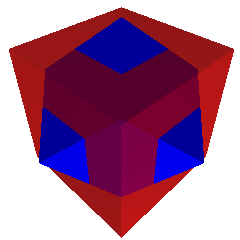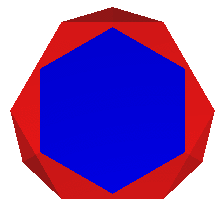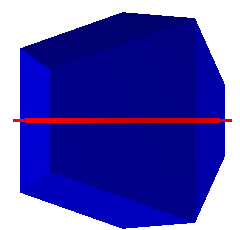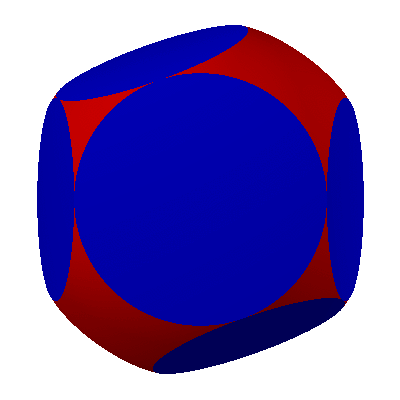
| ‹1,1,0› | ‹1,-1,0› | ‹-1,1,0› | ‹-1,-1,0› | |
| ‹1,0,1› | ‹1,0,-1› | ‹-1,0,1› | ‹-1,0,-1› | |
| ‹0,1,1› | ‹0,1,-1› | ‹0,-1,1› | ‹0,-1,-1› |

| ‹1,1,0› | ‹1,-1,0› | ‹-1,1,0› | ‹-1,-1,0› | |
| ‹1,0,1› | ‹1,0,-1› | ‹-1,0,1› | ‹-1,0,-1› | |
| ‹0,1,1› | ‹0,1,-1› | ‹0,-1,1› | ‹0,-1,-1› |

| distance | value |
| Vertice type 1 from the origin | sqrt(2) |
| Vertice type 2 from the origin | sqrt(3/2) |
| facet from the origin | 1 |
| edgelength of the cube fitting in the cell | sqrt(2) |
| second diagonal of the rhombus | 2 |

